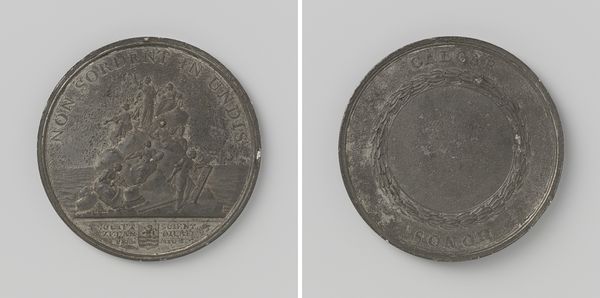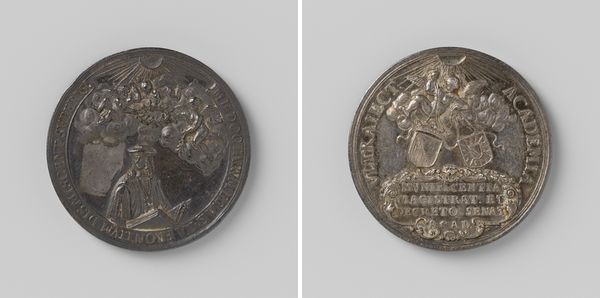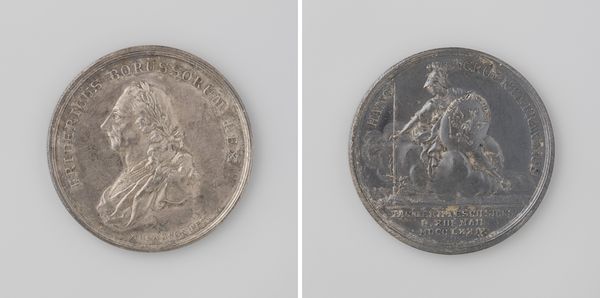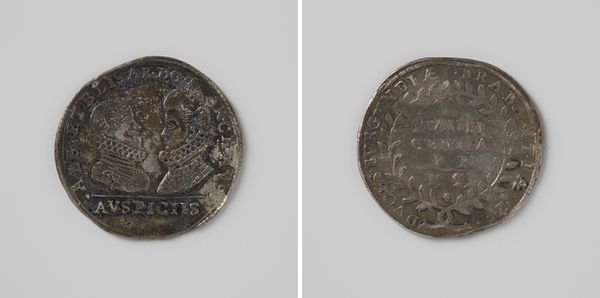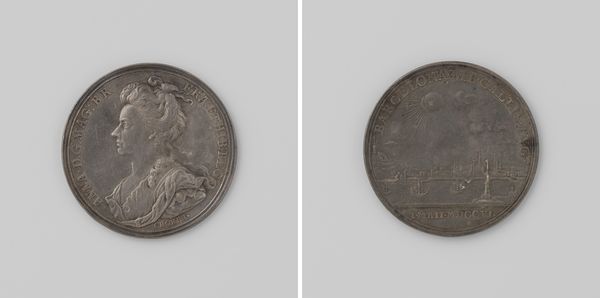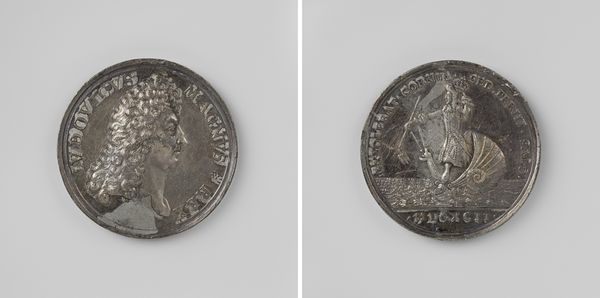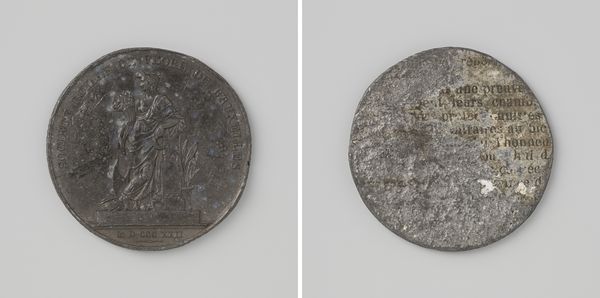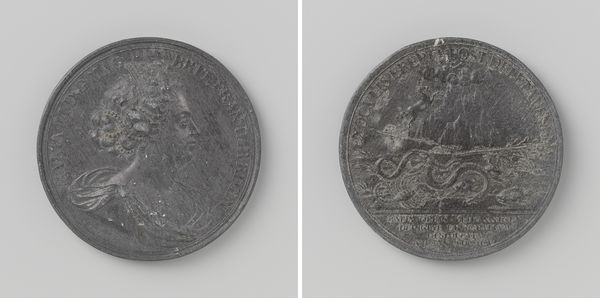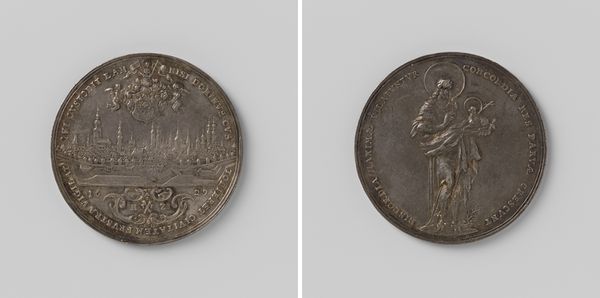
Vrede van Rijswijk en inname van Barcelona en Ath, ter ere van Lodewijk XIV 1697
0:00
0:00
anonymous
Rijksmuseum
metal, relief, sculpture, engraving
#
portrait
#
baroque
#
metal
#
sculpture
#
relief
#
sculpture
#
history-painting
#
engraving
#
statue
Dimensions: diameter 7.1 cm, weight 112.13 gr
Copyright: Rijks Museum: Open Domain
Curator: The first thing that strikes me is the scale. Even in an image, the intricacy and detail suggest this metal relief, now in the Rijksmuseum, is relatively small, a personal object almost. What do you think? Editor: Small, but certainly not insignificant. The visual density shouts of power, dominance even. This work, created around 1697, celebrates "The Peace of Rijswijk and the Capture of Barcelona and Ath," all to glorify Louis XIV. I immediately bristle at the celebratory tone around conquest, so blatantly etched. Curator: It's certainly an overt glorification. Looking at the imagery itself, the left side portrays a profile portrait of Louis XIV. It follows established visual codes meant to link rulers to ideas of timeless leadership and legitimate authority. The use of Latin inscribing his name, Ludovicus, does this by connecting him back to the Roman Empire, another touchstone in political symbolic language. Editor: Right, and we need to critically examine those languages. Consider how power constructs its narrative and self-image. It appears designed to communicate both power and supposed divine justification for said power, rather than historical fact. The imagery on the right with the angel seems propagandistic by linking terrestrial dominion with spiritual authority. Curator: The angel crowning the allegorical trophy… certainly. One could view the angel as a symbol of divine approval, suggesting a sacred endorsement of Louis XIV's actions. The trophy embodies both military triumph and the virtues Louis believed his reign exemplified: justice, strength, and wisdom. Even on an item of such limited dimension, the imagery is deployed to communicate many levels of association and continuity. Editor: Agreed, it's densely packed semiotics, even beyond the overt religious symbols. This object naturalizes ideas of colonial expansion and autocratic rule. How many saw the events represented and knew it involved profound human costs? How many question today what images this work intentionally obscures or erases? Curator: I see the work through layers of established artistic traditions meant to convey stability and virtue. I do recognize the layers of interpretation involved. Still, it presents opportunities to think about lasting values across different epochs. Editor: Perhaps, but I find myself focusing less on timeless virtues and more on who got to define those values and to what ends. Looking at historical trauma through commemorative art such as this makes clear the biases that solidify through representation. Curator: So much weight embedded within this tiny object! Editor: Indeed, far more than meets the eye on the surface.
Comments
No comments
Be the first to comment and join the conversation on the ultimate creative platform.
